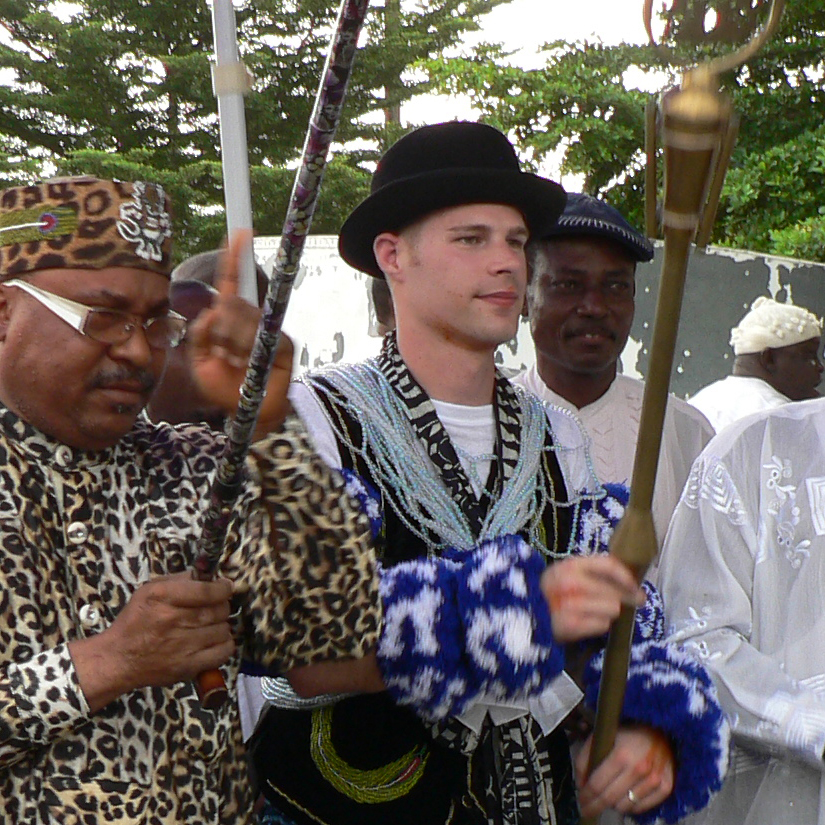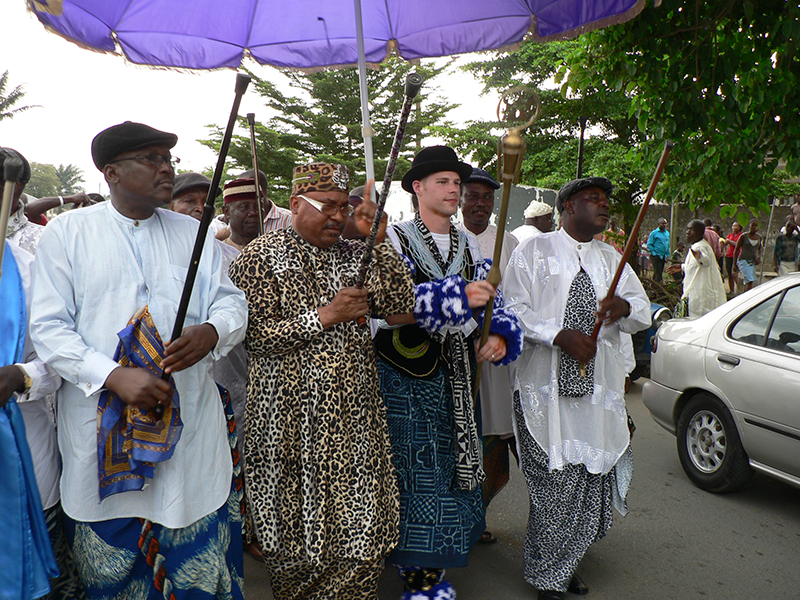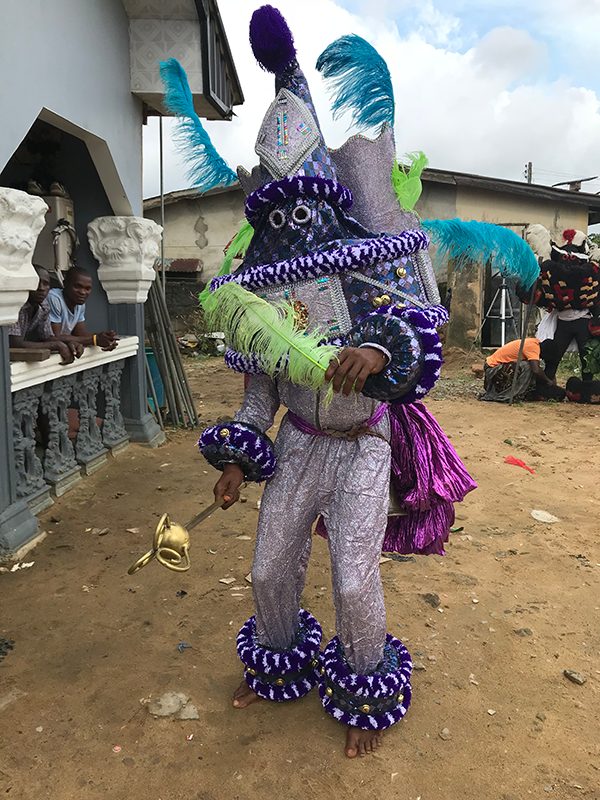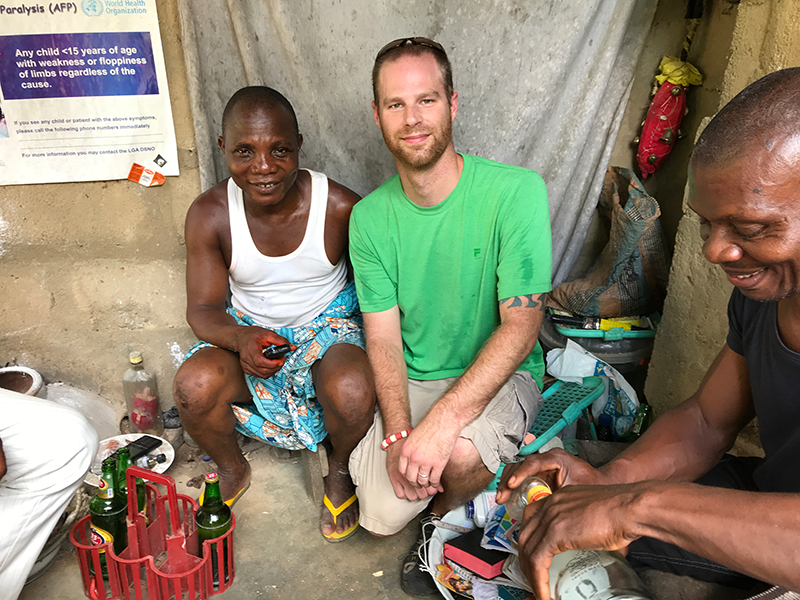Global Faculty Research Profile: Jordan Fenton

About Dr. Jordan A. Fenton

Assistant Professor (recently promoted to Associate Professor), Art History
Department of Art
- University of Florida, Ph.D. | 2012
- Kent State University, BA and MA
Research Interests
- African Art History, with an emphasis on the visual and performed expression of Nigerian masquerade arts.
Current Projects
- Finishing a monograph, Masquerade and Money in Urban Nigeria: The Case of Calabar, which examines the broad masquerade culture by exploring the six prominent masquerade societies currently thriving in Calabar.
- Developing a traveling exhibition on West African Masquerades (with two other scholars, Amanda Maples and Lisa Homann) for the Smithsonian's National Museum of African Art and the North Carolina Museum of Art.
Selected Publications
- "Expressive Currencies: Artistic Transactions and Transformations of Warrior-Inspired Masquerades In Calabar.” African Arts, Vol. 52: 1 (2019).
- “Efik Religion” in African Religions: Beliefs and Practices Through History, ABC-CLO Greenwood publications (2019).
- “Sustainable Futures: Ekpenyong Bassey Nsa and the Study of Traditional-Based African Artists.” African Arts, Vol. 50: 4 (2017).
Dr. Jordan A. Fenton, Assistant Professor of Art History (recently promoted to Associate Professor), is a specialist of African Art History, with an emphasis on the visual and performed expression of Nigerian masquerade arts, secret societies, esoteric knowledge systems, funerary rituals and installations, dress, economics and ways in which so-called “traditional” arts and artists operate in metropolitan cities. At Miami, Fenton teaches introductions on non-Western art and courses and seminars exploring Africa and its Diaspora.
What are some of your current research interests and/or projects?
My research on African art and culture investigates the ways in which the art, performance, ritual, dress, and esoteric knowledge systems of men's secret masquerade associations function and flourish in an urban milieu. My publications and ongoing research address the economics of African art, individual agency, the all-too-often marginalized traditional-based artist, the global aspect of “traditional” art, and my own initiations into the secret societies in which I study.
My findings are informed by 19 months of ongoing ethnographic field research in Calabar, capital of Cross River State, Nigeria. Fieldwork was conducted during six trips to Nigeria: 2008, 2009, 2009-2010 (year long trip supported by Fulbright-Hayes), 2014, 2016, and 2018. I am currently planning my seventh trip to continue fieldwork during the summer of 2022.
I am finishing up my final revised manuscript based on my long-term ethnographic research in Calabar, Nigeria (from 2008-present), on the masquerade culture of urban Calabar. The monograph, Masquerade and Money in Urban Nigeria: The Case of Calabar, is an effort to examine the broad masquerade culture by exploring the six prominent masquerade societies currently thriving in Calabar. In this book, I unravel the urban layers of masquerade performance, showing how “traditional” culture gains new roles or currencies within a contemporary, city-based context. I argue that urban masquerade performance provides a global platform for members to sustain themselves financially and to produce a type of space or “street stage” on which to “stand,” be heard, and expressively push back against the forces of marginalization and homogeneity.
I have also been working on developing a traveling exhibition on West African Masquerades (with two other scholars, Amanda Maples and Lisa Homann) for the Smithsonian's National Museum of African Art and the North Carolina Museum of Art. We were awarded a National Endowment of the Humanities grant of just over $60,000 to fund the preliminary expenses for this project! More specifically, it is a pre-planning NEH curatorial grant.
Most of this grant will cover myself and the other two collaborators to travel to our research sites in West Africa to commission masquerade costumes from living, active artists. And another point with this is that my 2017 article on the issues of ethical fieldwork and commissioning practices with living African artists serves as the methodological framework for this project. It is very exciting to see my research so well received and that it will be used as our core, ethical method for this project. I am excited to expand on this with my co-collaborators!

Fenton performing with fellow members during his initiation and installation into chief and titleholder of the Nigerian Ekpe/Mgbe secret society, Calabar, 2008.

Ekpe/Mgbe Ebonko masquerade by Chief Ekpenyong Bassey Nsa. Collected and commissioned by Fenton for the permanent collection of Miami's Art Museum in 2018. The commission ties to his research engaging more ethical ways/methods of working with underrepresented indigenous artists.
Has the COVID-19 pandemic affected your research?
COVID has disrupted my research schedule of returning to Nigeria about every two summers. I was supposed to travel back to Calabar, Nigeria, last summer and this summer to continue fieldwork, especially this summer for the HEH award. However, due to COVID, I will be pushing research back to next summer of 2022 to continue work for the exhibition and NEH project.
What are your plans for the coming year?

Fenton working with herbalist Chief (Dr.) Asuquo Effiong during a 2018 summer research trip.
In addition to publishing the aforementioned book and continuing work on the Smithsonian Exhibition and NEH project, I plan to work on publishing a reader for the Art of Africa, Oceania and Native America (as a companion text for my ART 162: Africa, Oceania and Native America course.)
After that, I start working on a second monograph investigating Nsibidi, an esoteric art form, language, and knowledge system of southeastern Nigeria and West Cameroon. It is a visual and performed system of knowledge/language that is deeply embedded into the masquerade culture I have been studying in Calabar since 2008. I have also been very fortunate as I have been apprenticed into this esoteric knowledge system over the last 13 years during my ethnographic work in Calabar, Nigeria.

